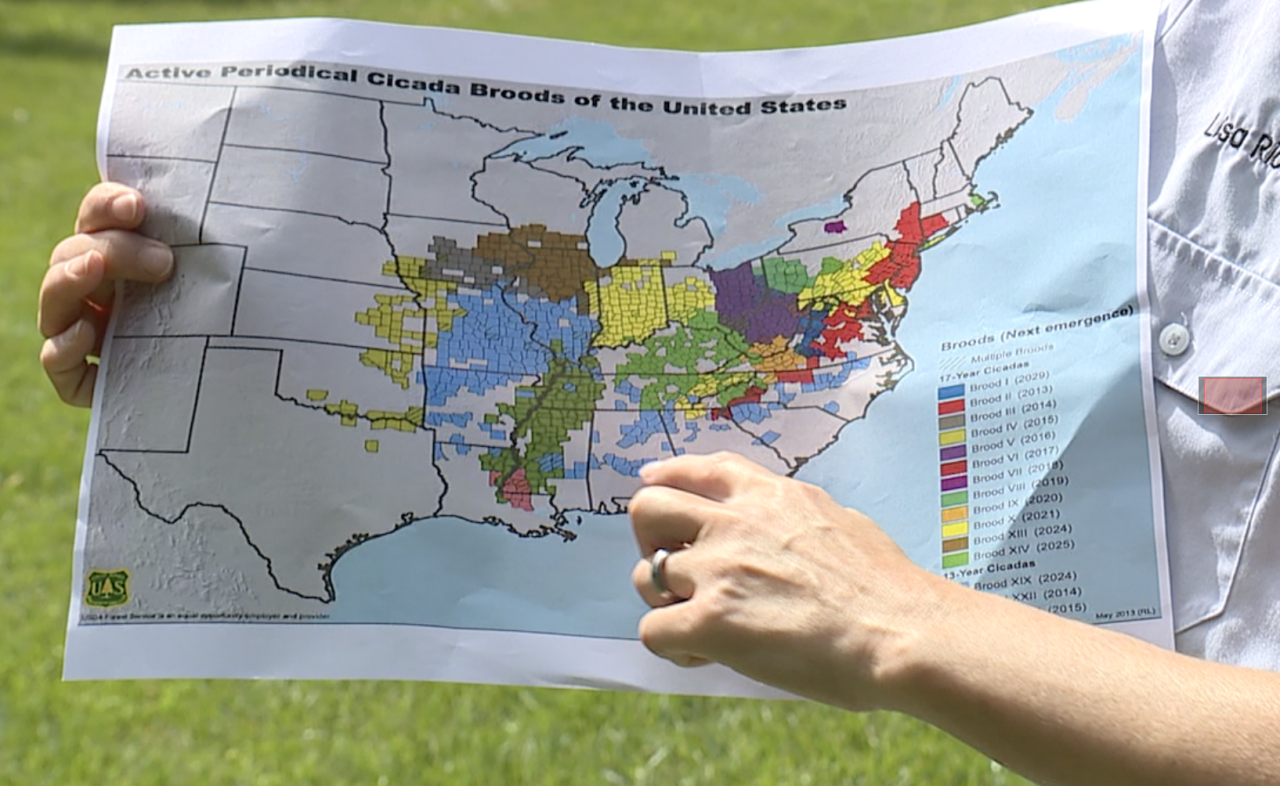KANSAS CITY, Mo. — Cicadas of the Great Southern Brood have emerged across the majority of Missouri, but not in Kansas City.
It's the largest brood of cicadas in the state of Missouri, and they emerge every 13 years. While their habitat sprawls over the Show Me State, their range does not reach Kansas City.

“Just in Kansas City, it’s pretty quiet," said Lisa Richter, a naturalist at the Burr Oak Woods Conservation Nature Center in Blue Springs. "People might be wondering what’s going on, but we aren’t going to see that brood in this area."
St. Louis and Columbia are subjected to the sound of the large brood of periodical cicadas that have emerged from the ground starting in May.
“It can get pretty loud, not as loud as a lawnmower, but pretty close," she said.
It's difficult to know just how many cicadas emerge, but the Missouri Department of Conservation says its possible trillions of Great Southern Brood cicadas will emerge this cycle — from May to late June — across their 15-state range.
The last periodical brood — known as the Kansan Brood — to emerge in Kansas City was in 2015. The Kansan Brood, which follows a 17-year cycle, will emerge again in 2032.
Bonnie Loper, a Blue Springs resident, was expecting to see the Great Southern Brood this cycle.

“I didn’t know that they weren’t coming to Kansas City, I thought that we were probably part of it," Loper said.
Although, Loper said, she's not missing out on the cicada phenomenon.
The Kansas City area will see — and hear — the annual cicadas when they emerge from the ground in late July and August.
—





